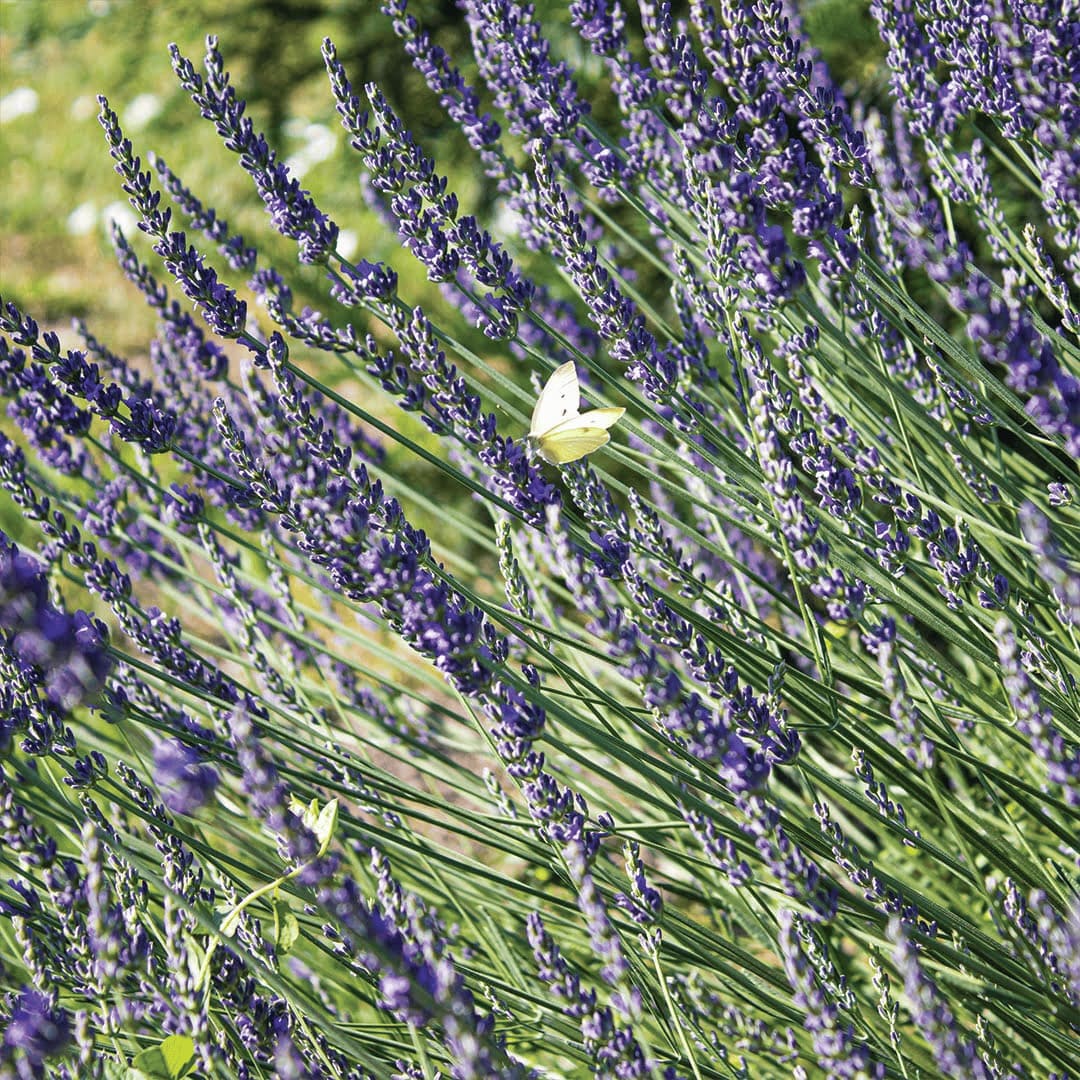
Lavender is a bushy Mediterranean plant that originates from the sunny and rocky regions of the western part of the Mediterranean.
Throughout history, various magical properties were attributed to lavender, which is why people used it for various purposes: cooking, medicine, hygiene.
In different parts of the world, lavender was a symbol of innocence and chastity, while in other cultures it was considered a powerful aphrodisiac. The ancient Romans used its essential oil in their baths, while early Christian believers believed that lavender wreaths on doors protected against evil forces. Also, there was an ancient belief that planting lavender brings good luck.
Considering its intoxicating smell and medicinal properties, lavender plantations are gradually conquering other parts of our continent. Climate change has drastically changed the weather conditions in our region, which has made it possible for lavender to thrive in our fields.
The aesthetic value and beauty of lavender is priceless, especially when looking at the beautiful scenes of fields in bloom. In addition, lavender plays an important role in the cosmetics industry, perfumery and medicine, which is another reason for its increasing popularity.
Table of content
Types of lavender
There are officially 48 plant species that belong to the Lavandula genus.
The most important and popular types that stand out are the following four:
- Lavandula angustifolia
- Lavandula latifolia
- Lavandula stoechas
- Lavandula hybrida
Which type of lavender should you choose for yourself? In the next chapter, we will try to bring you closer to the different types of lavender with their main characteristics, which can help you choose the perfect variety that suits your needs.
English lavender - lavandula angustifolia
English lavender is scientifically named Lavandula angustifolia. It is one of the most abundant species due to its durability. It is called "England", not because it originates from the British Isles, but because it mostly thrives there.
English lavender has some very important properties:
1. Extremely gentle, relaxing and complex aroma. It is considered to have the purest scent and aroma of lavender and if you want to grow lavender for its essential oil, lavender angustifolie oil gives essential oil of the highest quality.
2. It has narrow leaves, which is why it is often called narrow-leaved lavender. At the ends of each stem, there are cluster-shaped flowers, which give off the authentic look of real lavender.
Some of the other names by which it is known in different parts of the world is Lavandula officialis or Lavandula Angustifolia Vera or true lavender.
Endurance: USDA zones 5 through 9
Height: 60 to 90 cm
Spacing between bushes: 50 to 75 cm
Flowering: early or mid-summer and sometimes once again in autumn.
*USDA zones are a standardized way to determine the geographic locations where a plant can thrive.
You can read more about USDA zones HERE.
We as producers of natural cosmetics which is based on lavender's healing properties, we decided to grow this variety, in order to get the maximum that nature has to offer from our products.
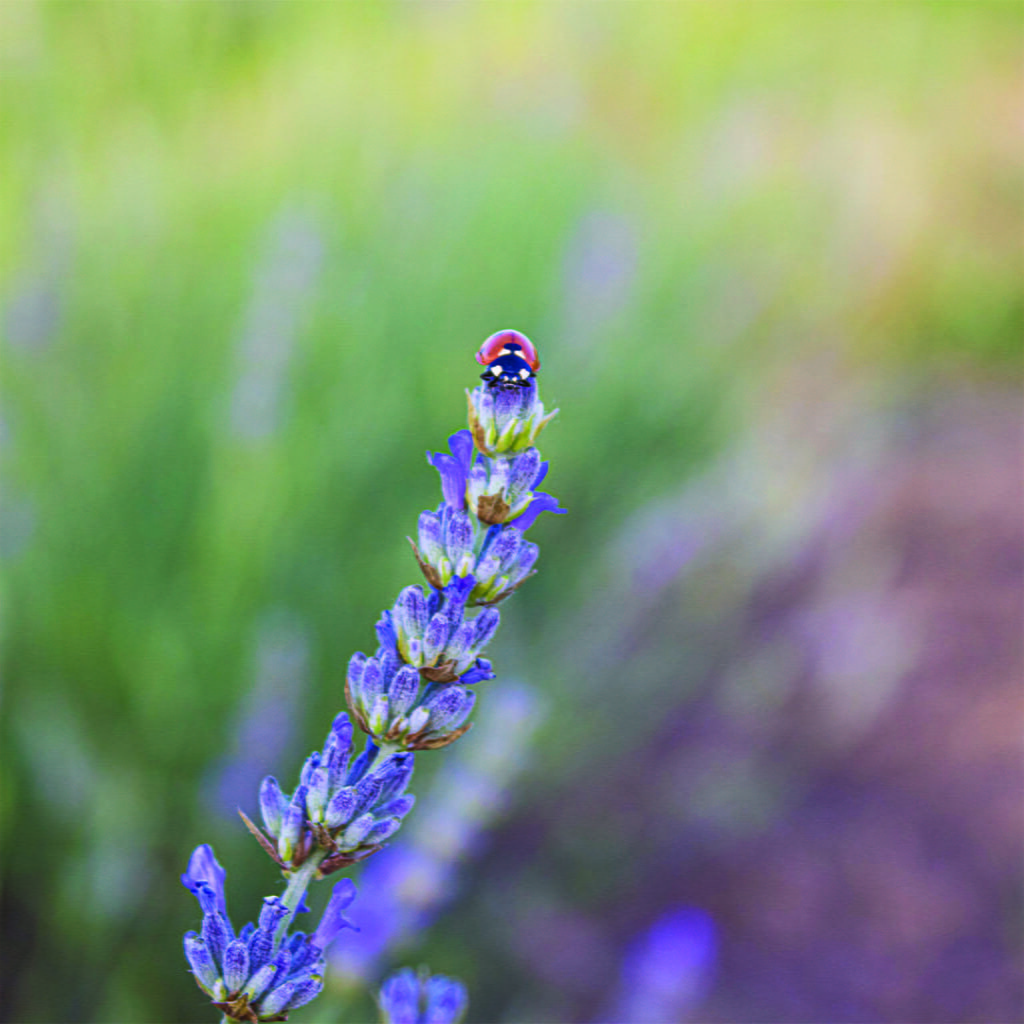
Lavandula Angustifolia 'Hidcote'
'Hidcote' is one of the most popular subspecies of English lavender in the world. Its main characteristics are that it has a long flowering period and dark purple flowers that have an extremely strong fragrance.
Although it has a long flowering period, unlike other species, it blooms only once a year, usually in late spring or early summer.
It is most often used in gardens or to form hedges and beautify the exterior around the house.
Endurance: USDA zones 5 through 9
Height: 30 to 60 cm
Width: 80 to 120 cm
Spacing between bushes: 45 to 60 cm
Flowering: late spring or early summer, just once.
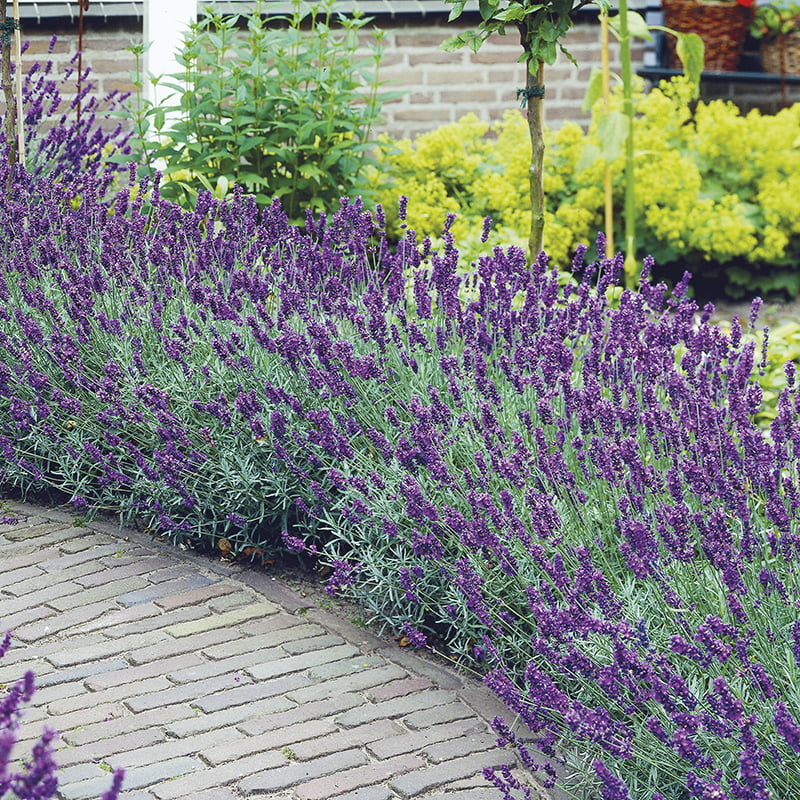
Lavandula Angustifolia 'Alba Nana'
The dwarf type of English lavender is a combination of white flowers and the most beautiful fragrance in the world. Its dwarf growth makes it an ideal species for planting in pots or planters on terraces.
Endurance: USDA zones 5 through 9
Height: 25 to 30 cm
Spacing between bushes: 30 to 40 cm
Flowering: mid or late summer, only once.
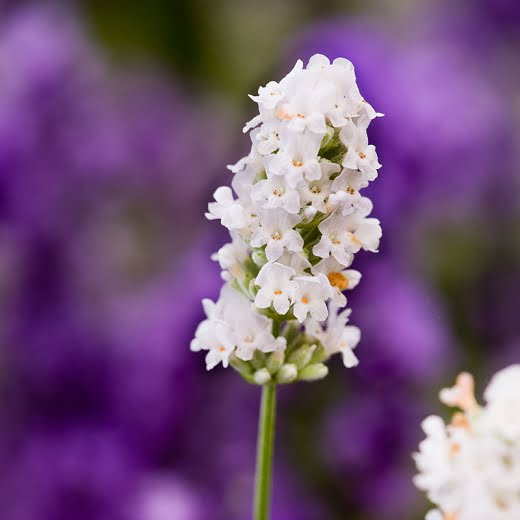
Lavandula Angustifolia 'Munstead'
This subspecies of English lavender has elite origins when it comes to gardening. She discovered it in 1916, famously Gertude Jekyll.
Gertrude Jekyll is known as a garden designer and horticultural expert, having designed over 400 gardens and parks in Great Britain, America and throughout Europe.
'Munstead' Lavender has a compact bush and very nicely defined 5-petaled, dewy or purple flowers.
It finds its ideal place in gardens or decorative rock gardens, where it radiates its grace and aroma.
Endurance: USDA zones 5 through 9
Height: 30 to 60 cm
Spacing between bushes: 60 to 75 cm
Flowering: late spring or early summer, just once.
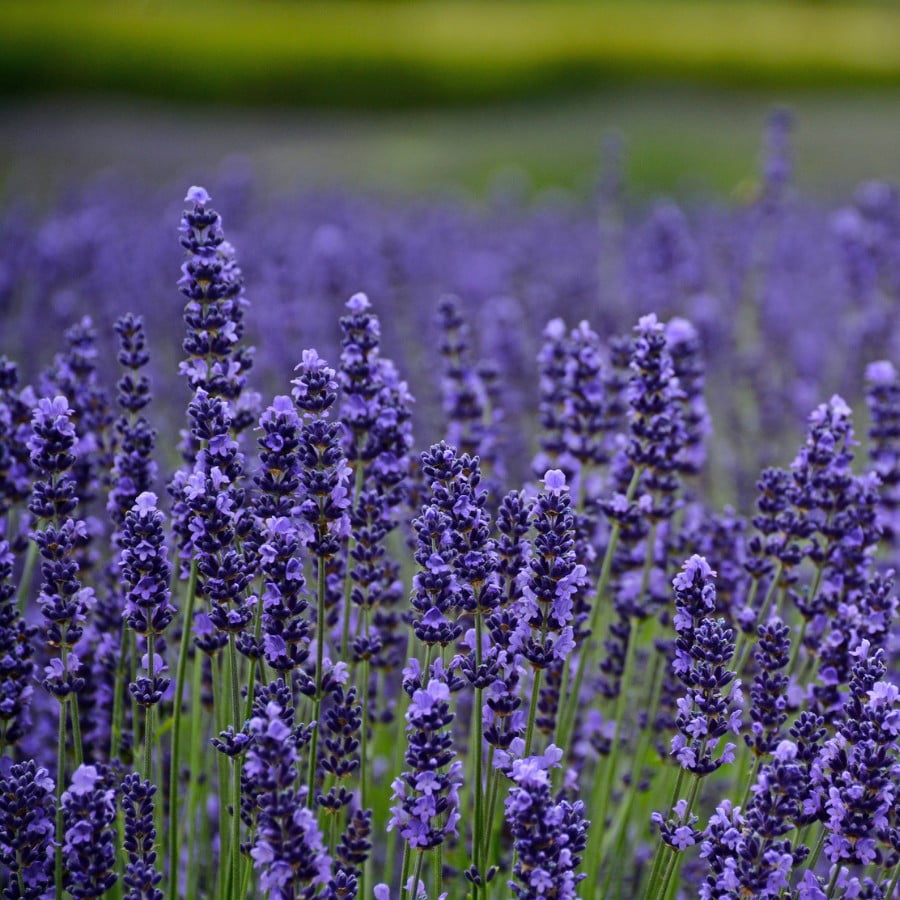
Lavandula Angustifolia 'Rosea'
The strong and calming scent of lavender Angustifolia "Rosea" will also be enhanced by the beautiful appearance of pink, sometimes white, flowers. It is considered the subspecies that blooms the most and gives the highest yield.
This makes it ideal for romantic hedges or as a nice detail in your garden.
Endurance: USDA zones 5 through 9
Height: 60 to 90 cm
Spacing between bushes: 75 to 90 cm
Flowering: late spring or early summer, just once.
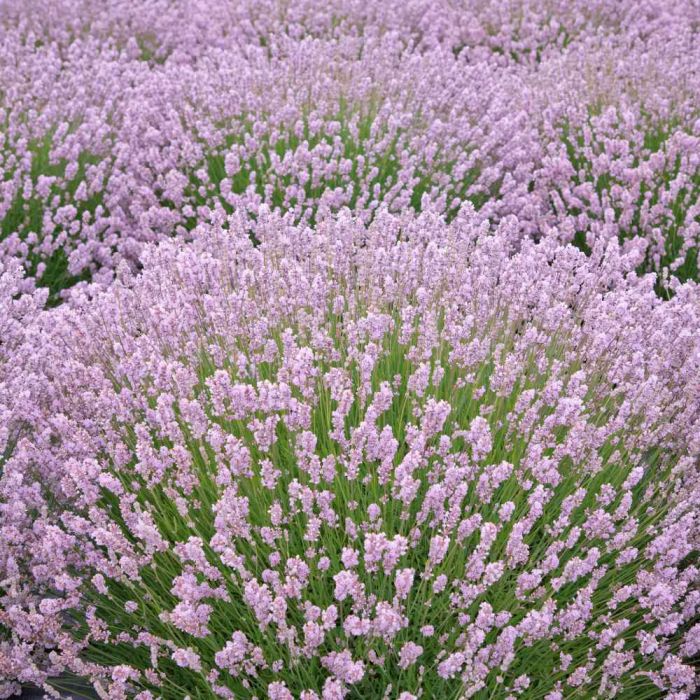
Lavandula Angustifolia 'Thumbelina Leigh'
'Thumbelina Leigh' is a subspecies of English lavender that has special value in gardening and landscaping. Visually, it looks very interesting because of its short and thick stems with fewer flowers than other types of lavender.
This makes this type of lavender ideal even for ordinary gardens and gardens, as it does not give off the appearance of a wild plant. It can even be grown in pots.
Endurance: USDA zones 5 through 9
Height: 25 to 30 cm
Spacing between bushes: 25 to 40 cm
Flowering: once in mid-summer and if pruning is done after that, it can bloom again in autumn.
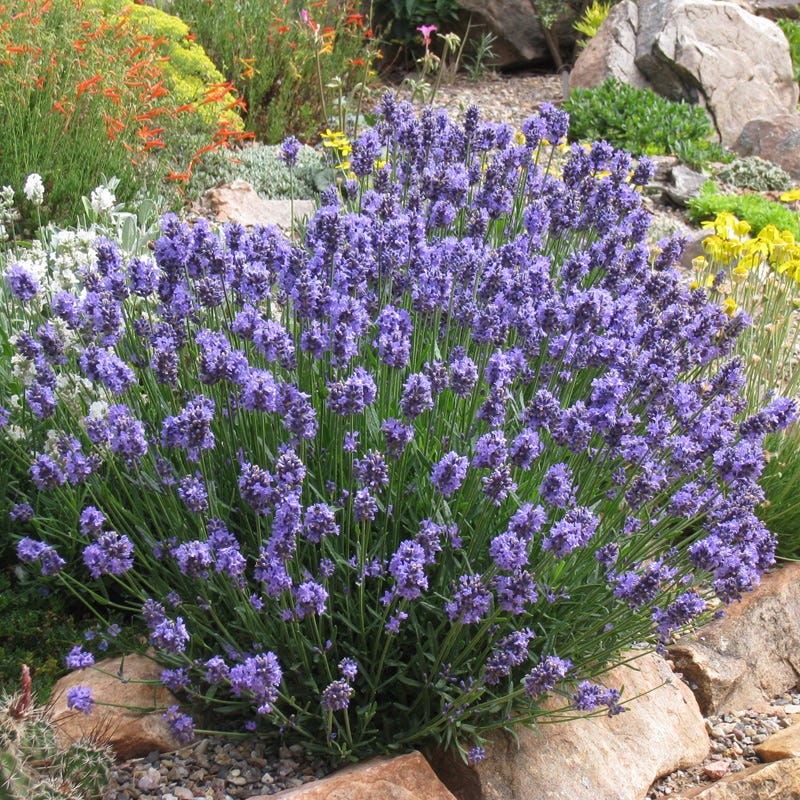
Visit our webshop
Natural cosmetics and natural scented candles according to the original recipe and in harmony with nature.
ShopLavandula Angustifolia 'Folgate'
It has classic deep purple flowers and is known for its abundant and dense blooms during spring.
The stems and flowers are similar in appearance to other types of lavender, only this subspecies has them in abundance.
It will serve perfectly to fill hedges and will easily blend in and enrich any garden and garden with its scent and color.
Endurance: USDA zones 5 through 9
Height: 60 to 90 cm
Spacing between bushes: 75 to 90 cm
Flowering: mid or late spring. If you prune the dry stems in time, they will have another bloom in early summer.
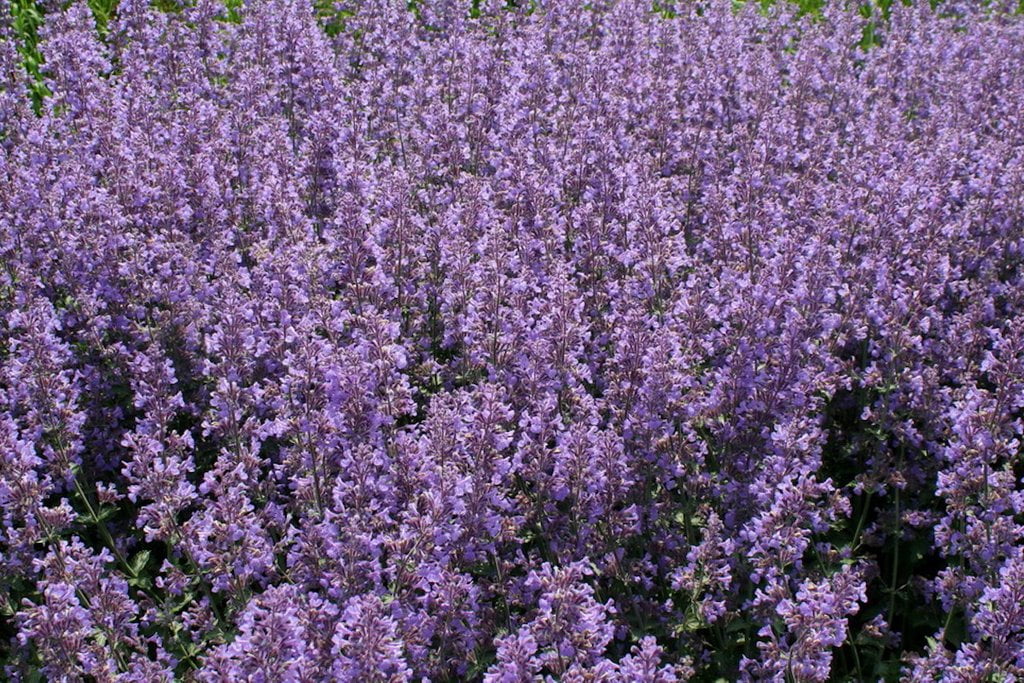
Lavandula Angustifolia 'Little Lottie'
If you want a slightly different lavender in your garden than other types, "Little Lotie" is the right choice for you.
It is different in that its flowers are usually in two colors. Some are white, while others are bright pink. Flowers of different colors are mixed with each other, which gives it an unusual appearance.
Endurance: USDA zones 5 through 9
Height: 30 to 60 cm
Width: 60 to 90 cm
Spacing between bushes: 60 to 75 cm
Flowering: at the end of spring, it can have a second and third flowering at the beginning and at the end of summer, if the dry flowers are pruned in time.
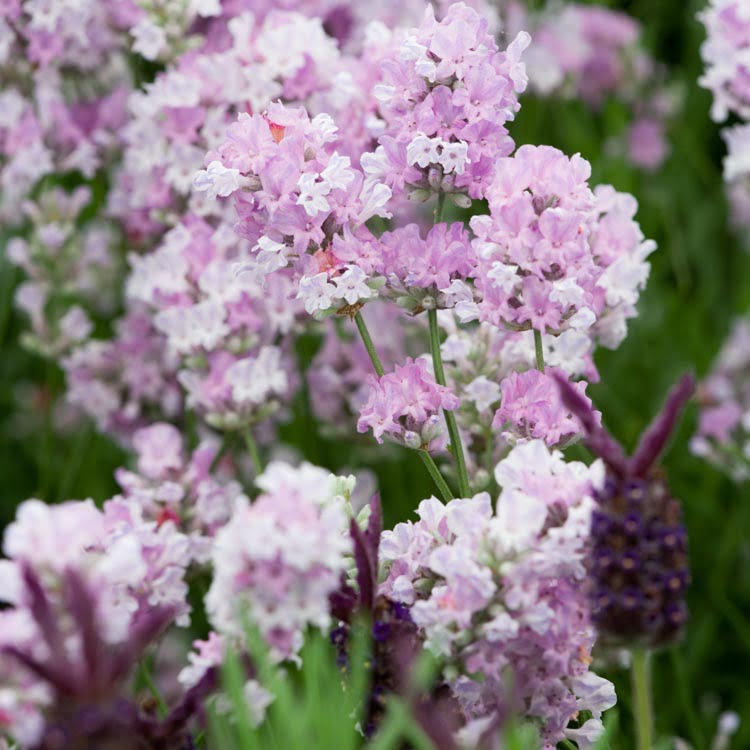
Lavandula Angustifolia 'Royal Velvet'
What sets this species apart from others are the long-lasting dark blue and dark purple flowers.
Royal Velvet will find its place in your garden, hedge or rockery, giving it a rich look and fragrance like few other plants.
Endurance: USDA zones 5 through 9
Height: 60 to 90 cm
Spacing between bushes: 75 to 90 cm
Flowering: late spring, usually only once
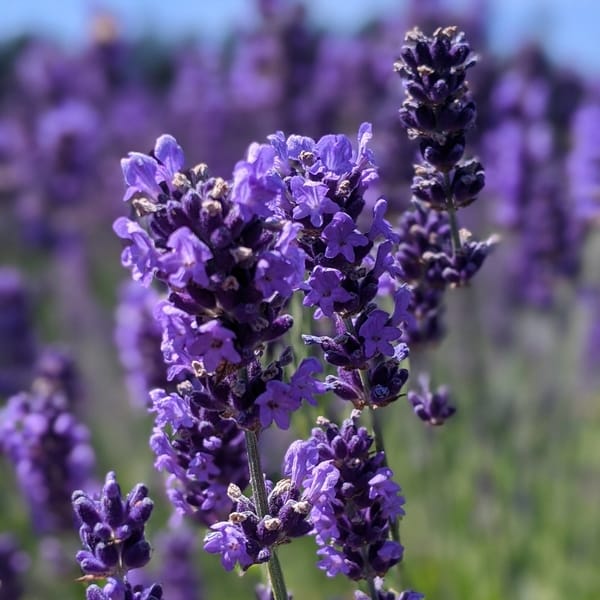
Portuguese lavender - Lavandula Latifolia
Broad-leaved lavender, spiked lavender or Lavandula latifolia is also known as Portuguese lavender. Although there are many different names, they all actually represent the same species.
It represents a type of lavender that originates from the Mediterranean. It is known for its fragrance and aromatic properties.
If you want to grow this type of lavender, it is important to know that you should plant it as far as possible from English lavender (Lavandula angustifolia). This is necessary for two simple reasons:
- In order to avoid the creation of a hybrid species. The pollens of these two lavenders mix very easily.
- To prevent odors from mixing. Portuguese lavender essential oil has a much stronger smell, but also a much lower value because it does not contain medicinal components.
What are the characteristics of Portuguese lavender?
- As we can tell from its name, it has wide elliptical silver leaves, unlike other types of lavender which usually have thin and long leaves.
- It has an extremely strong smell, but contains a lot of camphor, which is why it is not as high in value as English lavender.
- When closed, the flowers look like spikes, which is why it resembles wheat.
It is a fairly tame plant, which makes it easy to grow and maintain.
Endurance: USDA zones 6 through 9
Height: 30 to 80 cm, reaches maximum height 5 years after planting
Spacing between bushes: 70 to 90 cm
Flowering: several times from June to September
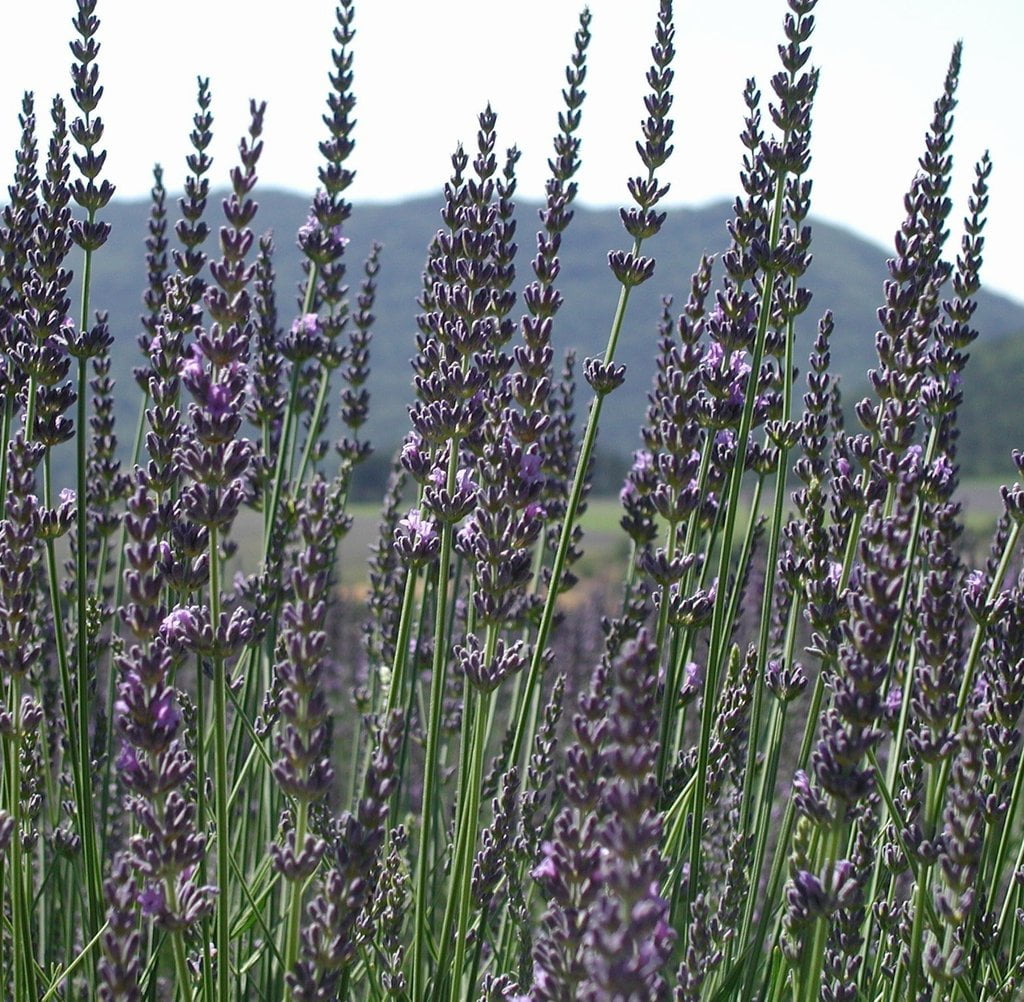
French (Spanish) lavender - Lavandula Stoechas
When we think of France, the first thing that most people think of, after Paris and the Eiffel Tower, is lavender and lavender fields in Provence, in the south of France.
Although the species Lavandula stoechas we usually also call it French lavender, in some parts of the world, and mostly in America this type is called Spanish lavender or Lavandula dentata.
Whatever you call it, these are the characteristics of this extremely important subspecies of the lavender family:
- It is known for its long and large petals on top of individual stems. Gardeners often call such petals "ears" or "rabbit ears" because of their interesting and attractive appearance.
- It has a sharp and strong smell compared to English lavender and is not usually used to obtain essential oil.
- It is not as hardy as English lavender and does less well in colder climates (USDA 8 to 9).
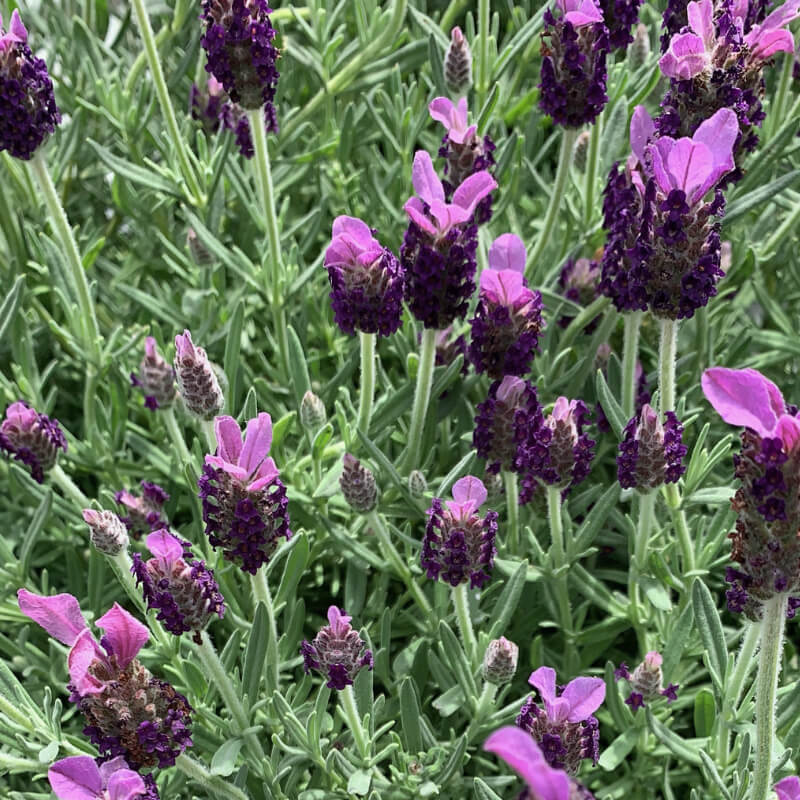
Lavandula Stoechas 'Anouk'
'Anouk' lavender has an extremely striking appearance, with large light pink flowers with long "ears".
The flowers usually stand upright at the top of the stem, which allows the "ears" to stand out even more.
It is perfect for fences and gardens due to its constant and long flowering.
With its appearance, it attracts the eye of every observer, and besides, it also attracts many butterflies, which only beautifies the scene.
Endurance: USDA zones 6 through 10
Height: 45 to 60 cm, reaches maximum height 5 years after planting
Spacing between bushes: 70 to 90 cm
Flowering: several times from mid-spring to autumn
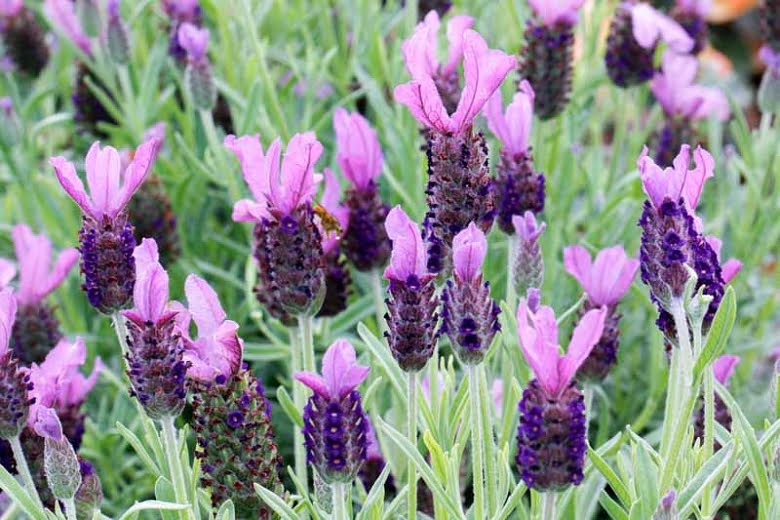
Lavandula Stoechas 'Ballerina'
Another species that captivates with its appearance, "Ballerina", has short upright stems, on which there are purple flowers with large white "ears".
This species can be grown on terraces in pots, but also in gardens and rock gardens.
Endurance: USDA Zones 8 through 9
Height: 30 to 60 cm, reaches maximum height 5 years after planting
Spacing between bushes: 60 cm
Flowering: mid-spring to late summer. Usually once in May, then in June, August, and sometimes in September.
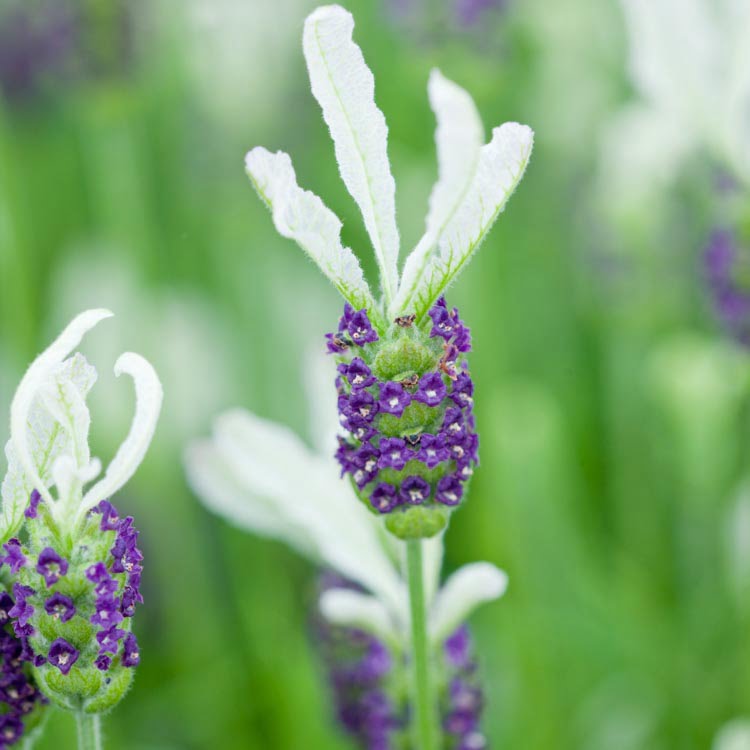
Lavandula Stoechas 'With Love'
Elegance, the first word that comes to mind when we mention French lavender "With Love". A beautiful subspecies of lavender with beautiful purple flowers and "ears" and short stems.
Another type of lavender that encourages your creativity and originality. It has a strong smell, so it will find its ideal place on your terrace or planter.
Endurance: USDA zones 6 through 10
Height: 30 to 60 cm
Spacing between bushes: 40 cm
Flowering: mid-spring to autumn, usually three times
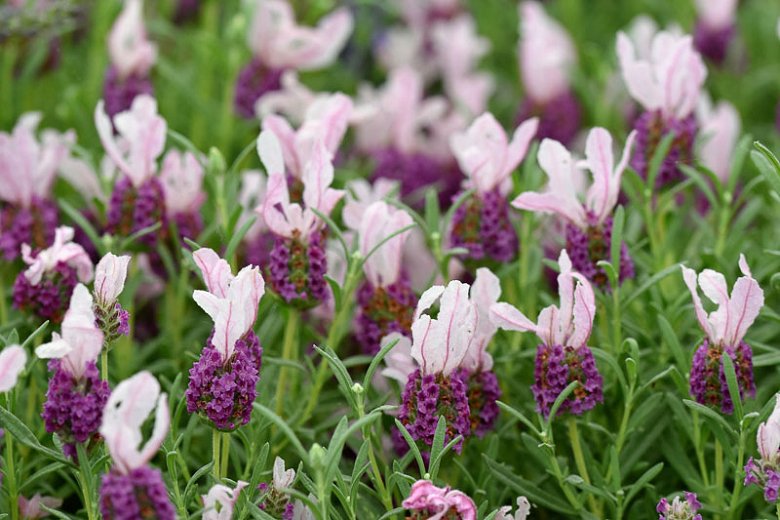
Lavandula Dentata
Although this type of lavender has a faint fragrance and its flowers are not as impressive as other French lavenders, it is still highly prized in the decorative world for its flower with purple "ears" on top and silver leaves.
Used to add extra texture to hedges and rockeries.
Endurance: USDA zones 8 through 10
Height: 90 cm
Width: 90 – 150 cm
Spacing between bushes: 60 cm – 120 cm
Flowering: it can bloom all year round, with the strongest intensity in autumn and early winter
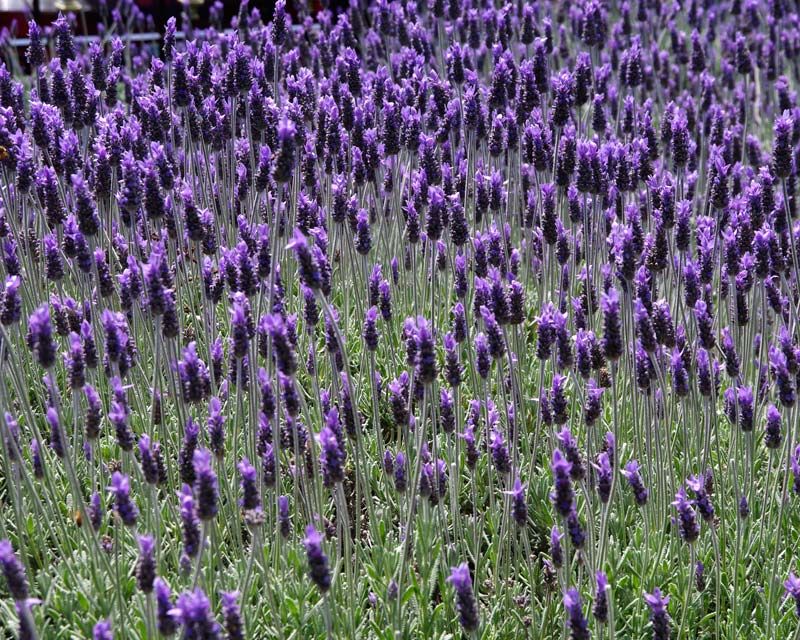
Edukacija
Book "Lavender - Beginner's Guide" (ebook)
1.200 RSD Original price was: 1.200 RSD.1.000 RSDCurrent price is: 1.000 RSD.
Your favorite
Natural lavender cosmetics
If you want to see all our domestic products, visit our store.
Difference between lavender and lavandin?
The visual difference between English Lavender and Lavandin is that Lavandin tends to be larger than true lavender. It has longer and larger stems with larger flowers.
Hybrid Lavender (Lavandula Hybrida) usually blooms later than English lavender, and usually the two species are planted together in gardens and allotments, in order to "extend" lavender flowering in the living space.
As for the production of essential oil, Lavandin in principle manages to obtain 3 times more essential oil per kilogram of herbs. For this reason, lavender essential oil is cheaper to produce than English lavender essential oil. This is why it is more often used in cheaper products such as perfumes or detergents. This does not mean that Lavender essential oil is bad, it just means that it has a different application than essential oil Lavender Angustifolie.
The key difference between lavender essential oil and true lavender essential oil is camphor, which is found in a much higher percentage in lavender.
Regular essential oil of lavender contains between 0%-0.6% camphor, while this percentage in lavender is 6%-10%.
Of course, the percentage of camphor also affects the smell of the plant itself, where Lavandin oil has a much sharper aroma.
Lavandula X Intermedia
It represents a hybrid variety that was created by crossing English (Lavandula angustifolia) and Portuguese lavender (Lavandula latifolia).
Crossing of these two varieties is also possible in nature, if the plants are in close proximity.
Features:
- The color of the flower goes from blue to purple.
- The smell is strong and refreshing with aromatic notes of camphor.
- The flowers on the stems usually form groups of 3 flowers each.
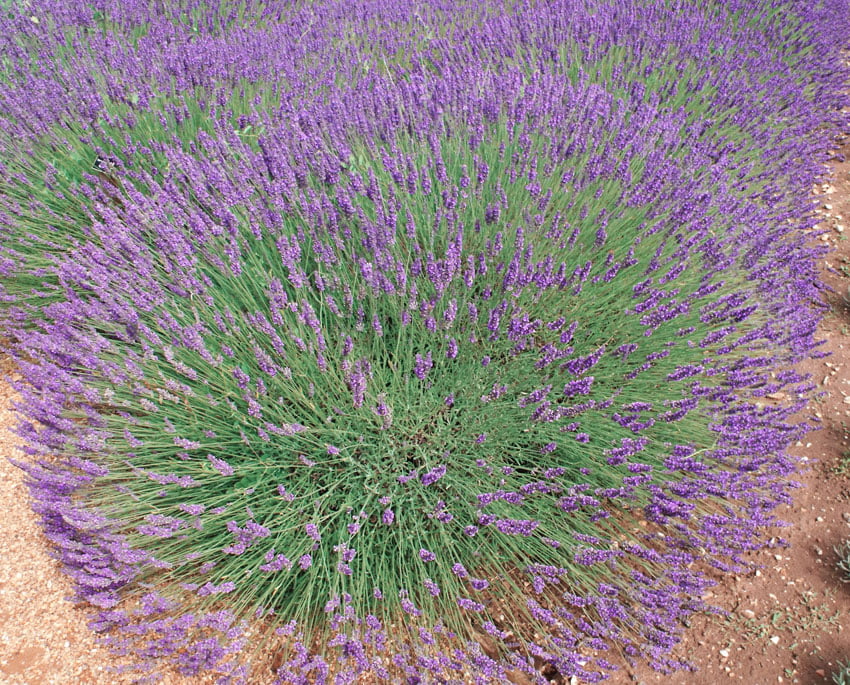
Lavandula X Intermedia 'Provence'
Throughout the world, Provence is synonymous with lavender, hence the idea to call this variety of hybrid lavender by this name.
Its characteristic is that it has extremely long bright purple flowers, up to 8 cm.
If you don't live in too dry an area, "Provence" may be your choice.
So even if you don't live in sunny Spain, this lavender variety can thrive in your garden.
Endurance: USDA zones 5 through 8
Height: 60 – 90 cm
Width: 90 – 150 cm
Spacing between bushes: 60 cm – 120 cm
Flowering: mid or late summer
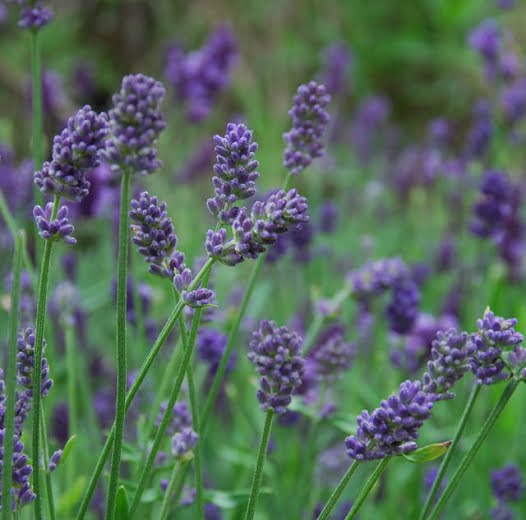
Lavandula X Intermedia 'Grosso'
A beautiful plant that grows extremely fast. Lavender 'Grosso' also has extremely long stems, up to 15 cm, with the classic purple flower characteristic of lavender.
Although it is very durable and easy to grow, it will give your garden an elegant look that you will not be able to take your eyes off.
Endurance: USDA zones 5 through 8
Height: 60 – 90 cm
Spacing between bushes: 90 cm – 120 cm
Flowering: mid or late summer
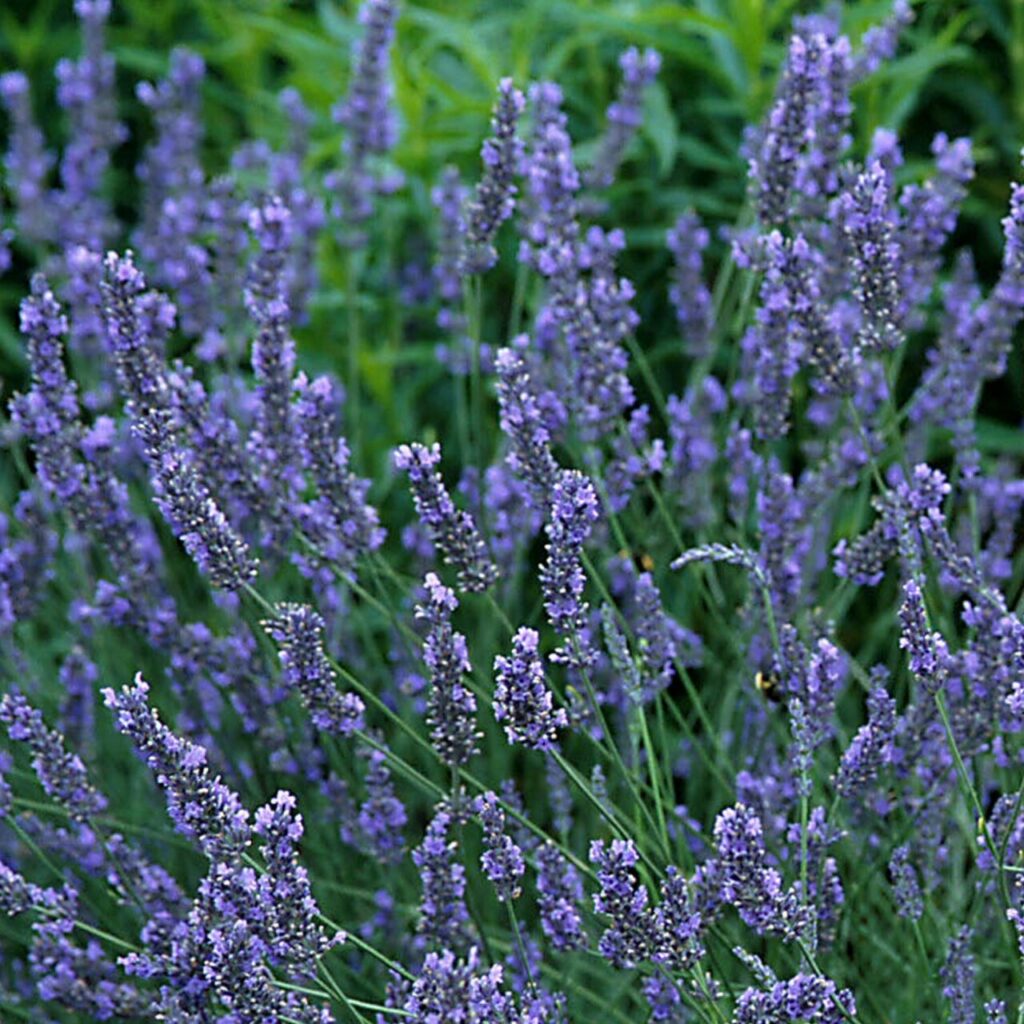
Lavandula X Intermedia 'Hidcote Giant'
The unusual 'Hidcote Giant' lavender variety is known for its extra large growth and thick stems with bright purple flowers.
The length of the stems goes up to 10 cm.
It is a very decorative plant and finds its place in various gardens, and it can also be grown in a pot.
Endurance: USDA zones 5 through 8
Height: 60 – 90 cm
Width: 90 – 120 cm
Spacing between bushes: 90 cm – 120 cm
Flowering: mid or late summer
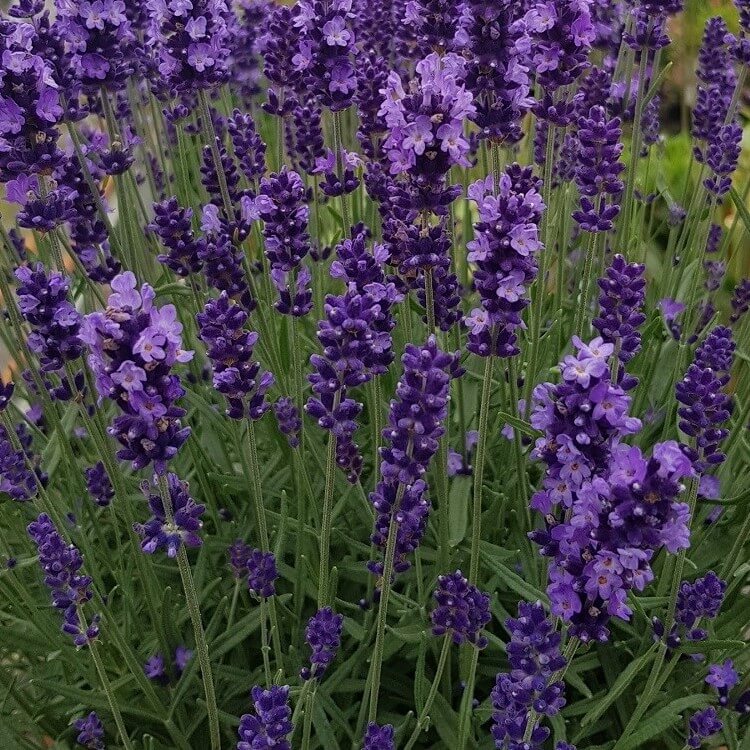
Lavandula X intermedia 'Budrovka'
Also known as Hvar lavender or Hvar lavender, it comes from this Croatian island and was obtained by crossing English and French lavender.
Like all lavenders, it produces more oil than real lavender, but due to the difference in chemical composition, it is of lower quality and does not have a calming effect on our nervous system. It is used in the production of perfumes and analgesics.
Ova sorta dokazano uspešno uspeva i u našim krajevima, tako da može vrlo lako pronaći mesto i u Vašem vrtu.
It thrives best on sandy or gravelly soil where the pH value of the soil ranges from 6.5 to 7.5.
The surface on which it is planted must have plenty of sunny intervals during the day, so hilly terrains are ideal for planting this variety.
Endurance: USDA zones 5 through 8
Height: 70 – 120 cm
Spacing between bushes: 150 cm – 200 cm
Flowering: mid or late summer
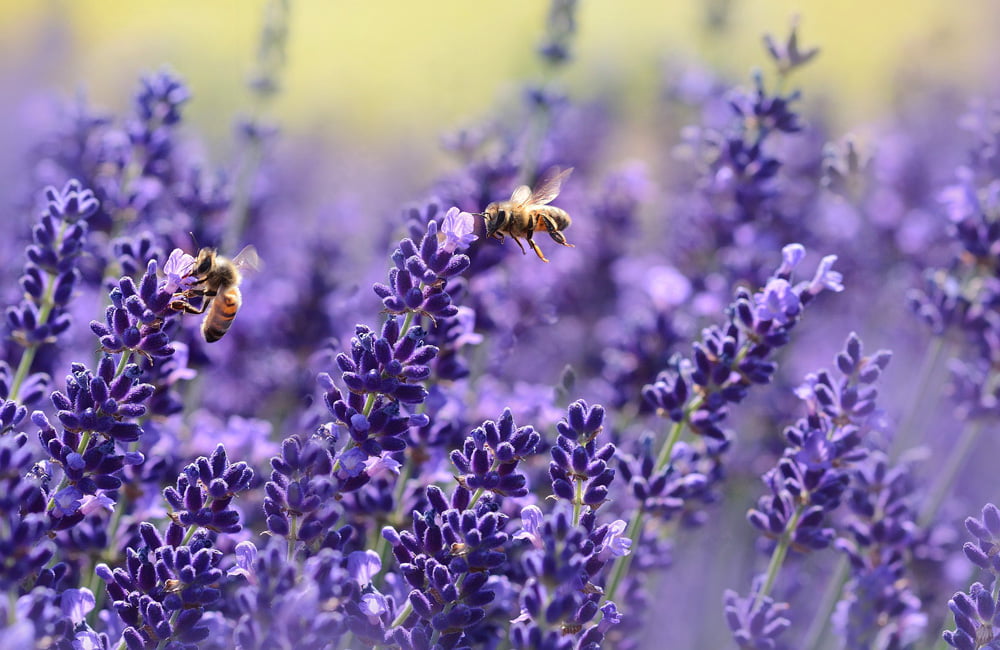
English, French or Spanish, Portuguese or Lavandin, lavender is a very special and useful plant.
In addition to beautifying our gardens and bringing a wonderful aroma to our living space, it is very rich in pollen, which attracts bees and butterflies, so the other plants that are near it also benefit from it.
With lavender, we are one step closer to our dream world!
How to grow lavender?
As we mentioned earlier, the lavender family has 48 species.
The altitude at which true lavender grows best (Angustifolia Vera) is 1700 m, broad-leaved up to 700 m, and hybrid from 700-1000 m.
Lavender grows in the form of a hemispherical bush and is a perennial plant whose lifespan is up to 30 years.
Lavender has a woody root that penetrates deep into the soil.
The stem is woody,
short and very branched. In the case of real lavender, the bush is 45-60 cm high and 80-120 cm wide.
Its leaves are grey-green, narrow, and hairy on the back side. They are 3-5 cm long and 0.2-0.5 cm wide.
The flowers have blue or purple petals, which is characteristic of lavender.
The lavender fruit is a pod, with four seeds in it
only one to two seeds fully develop.
Its shape is ovoid and black-brown in color, and its length is 1.8-2.2 mm.
The absolute weight of the seeds is 0.5-1.1 g.
Hybrid lavender fruits are not usable for plant propagation, as they are sterile.
The essential oil accumulates in the glands located next to the flower pod itself. Linalool and linalyl acetate are the main constituents of the essential oil.
True lavender contains 35-60% linalyl acetate, while hybrid lavender contains 7-16%.
Lavender seeds can germinate even after three to four years. Sown seeds germinate up to two months. The plant grows very slowly at first, but the flower stem can grow already in the first year of planting.
With the arrival of spring and summer, in the second year, the real vegetation begins. Full bloom lasts six to eight days and the flowers then contain the best quality essential oil.
Lavender cultivation technology
How to grow lavender?
Lavender cultivation technology consists of crop rotation, plant nutrition, soil preparation, propagation, crop care, flower picking and seed production.
Lavender can remain in the same place for 15 to 30 years. The ground must be maintained and weeded. A young plant can be planted in the place where it was, e.g. corn after two to three years, because it is extremely sensitive to slowly dissolving herbicides.
The nutrition of the plant is very important if we grow lavender for the yield and distillation of the essential oil. For basic soil fertilization, it is necessary to provide 30-40 kg of nitrogen, 60-80 kg of phosphorus and 90-100 kg of potassium per hectare.
Feeding with 50-60 kg of nitrogen per hectare improves the budding of plants that follows planting.
In the following years, the crop should be fertilized regularly in autumn, 20-30 kg of nitrogen, 50-60 kg of phosphorus, 70-80 kg of potassium.
In the spring, it is necessary to feed the crop with 30-50 kg of nitrogen per hectare.
Planting lavender
"How do I plant my lavender?"
Planting lavender is an activity that is carried out in the spring, usually in March or in the fall, usually in October.
Prepared seedlings are usually 12-20 cm high shoots, they are placed in soil that has been watered abundantly in holes about 20 cm deep.
After placing the seedlings in the holes, cover them well with soil and water them. After planting, the seedling should protrude about 10 cm above the ground.
Seedling spacing is specific to each variety and is usually specified when purchasing seedlings.
When it comes to variety Angustifolia Vera, the distance between rows is recommended to be 100-150 cm, and within a row 50-100 cm.
After planting, it is necessary to water the plants every 3 to 5 days.
The first pruning is done when the seedlings reach a height of 20 cm, where they are shortened again to a height of 10 cm, in order to strengthen the root system and the plant to form new shoots.
Planting lavender on plantations can be done manually or with machines, it is estimated that about 16 thousand real lavender seedlings are planted per hectare, if it is a hybrid species, the number of seedlings per hectare is about 10 thousand.
Pruning lavender
When you commit to growing and caring for lavender, the key skill that will ensure its luxuriant floral splendor is proper plant pruning. Lavender pruning plays an important role in the shape, health and abundant flowering of these beautiful plants. This technique should be approached with care and understanding in order to achieve the best results.
The first step in lavender pruning is to understand the stages in which it occurs. The first year of the plant's life, especially at the end of May, marks the first important moment for pruning. The focus in this phase is the formation of the future shape of the plant. Older twigs that have already bloomed or started to dry are carefully cut, leaving them at a length of 8 to 10 cm above the base of the plant. This step allows the young twigs to develop and prepare for the future flowering season.
The next stage of pruning occurs in the second year of lavender's life. This time, the goal is to achieve the optimal height of the plant, usually between 15 and 18 cm. By pruning the higher parts of the plant, even growth is encouraged and a compact form is maintained that is ready for abundant flowering.
Once your lavender crop reaches maturity, pruning takes on added importance. For old plants showing signs of aging, rejuvenation is key. Here, the flower stems are shortened to a height of 10 to 15 cm, in order to encourage the growth of new vegetation and prevent the "crushing" of the plant. This practice of rejuvenation can be repeated several times during the life of the plantation, prolonging vitality and quality yield.
It is important to note that hybrid lavender has its own specificities. Unlike purebred lavender, hybrid varieties do not produce new stems from old ones, so pruning this type of lavender can be adapted to maintenance and shaping, in order to maintain beauty and vitality.
Proper lavender pruning is key to its success and blooming in full glory. This skill is not only technical, but requires attention, patience and dedication. Through proper pruning, your plants will thrive and bring you the wealth of beauty, fragrance and beneficial properties that lavender provides.
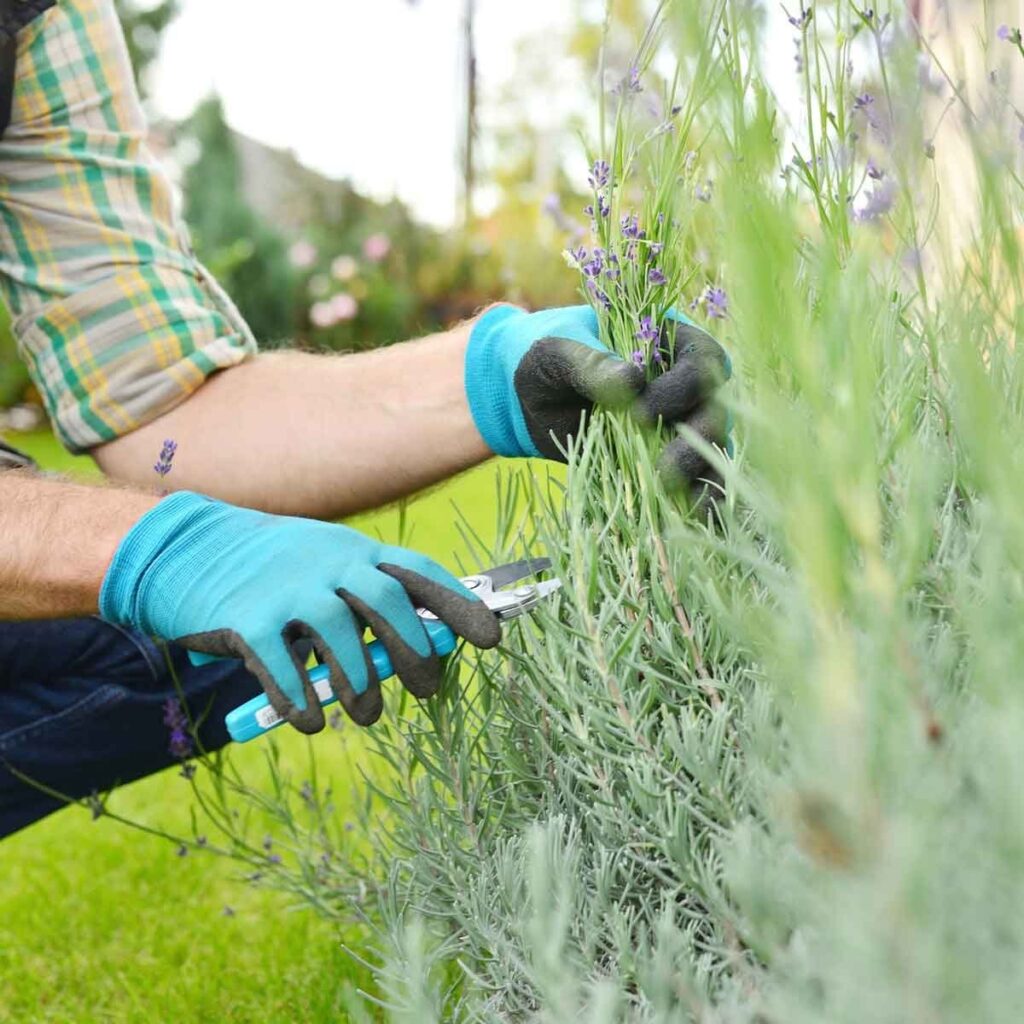
Harvesting lavender
Lavender blooming, when we talk about the variety Angustifolia Vera, lasts seven to eight days. During this time, it is necessary to turn the lavender for the distillation of the essential oil. The harvest itself begins before full bloom so that the quality of the oil is not lost.
True lavender usually blooms in June, while hybrid blooms a little later in July. The flower stem is cut to the first pair of leaves. Otherwise, the plant will bloom less well next year.
If the stem is left too long, the quality of the produced essential oil decreases, and unprofessional pruning decreases the quality and health of the plant itself.
One worker with a sharp sickle can manually cut 100-150 kg of true lavender flowers or 300-500 kg of hybrid lavender flowers in 10 hours in a plantation that is five to eight years old.
On large plantations, only harvesting with suitable machines is economically profitable.
The lavender yield depends on the age of the plants, and the real lavender yield is expected in the fifth year.
To obtain one kilogram of pure dry flower, 8-10 kg of fresh flower is needed.
For essential oil distillation, the flower is cut together with the stem up to the crown.
Lavender harvest is tiring but at the same time a beautiful activity that represents a unique experience in nature.
Drying lavender
The easiest way to dry lavender and make beautiful decorative lavender bouquets is as follows.
When picking, form small bouquets that you will tie with string.
Lavender bouquets are dried upside down in rooms with less light, but in which there is plenty of air and drafts.
In this way, the lavender dries naturally, while the essential oil that is still in the flowers remains in its original form.
Therefore, dried lavender has the ability to give off a pleasant fragrance for a long time.
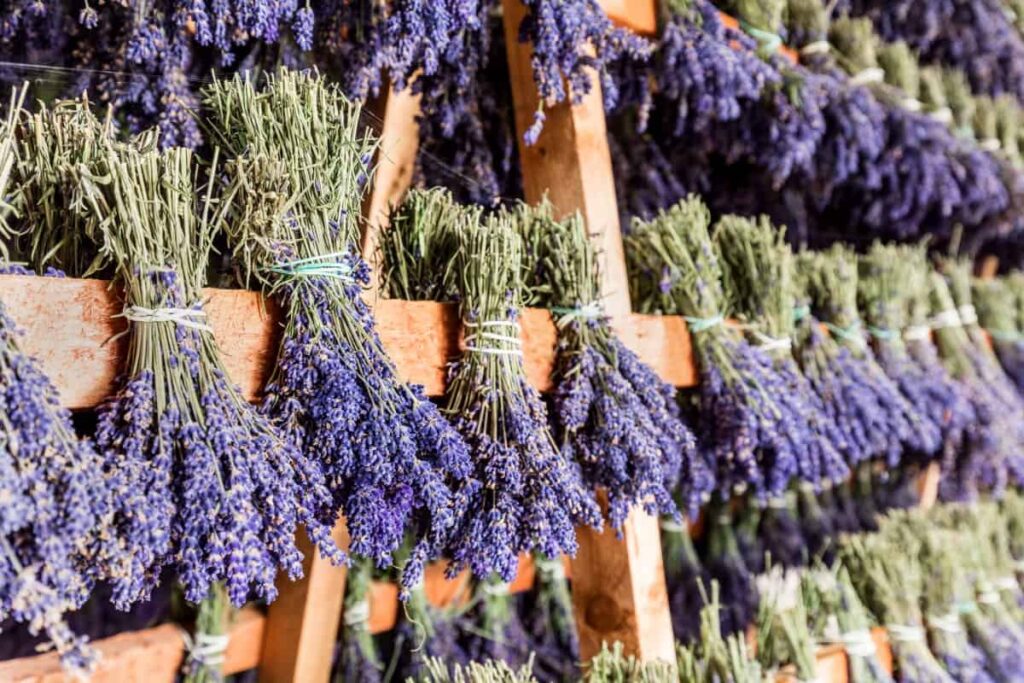
Lavender propagation
To produce real lavender seeds, selection must first be done, then the crop must be kept weed-free until harvest, and the harvest must be done in two steps.
First, the dried flowers with the stem are cut at the moment when the seeds turn black.
The cut flowers are spread in some covered area to dry until the seeds ripen. 200-300 kg of lavender seeds can be produced per hectare.
Propagation of lavender from seed
To propagate lavender from seeds, you need shallow pots in which you will plant the selected seeds.
Place the seeds in the pot and cover with a thin layer of soil or humus. Water the planted seeds regularly, but not too much. Keep the pot in a sunny place.
The seeds should germinate in a few weeks and your little lavender will be ready to transplant when it has a few leaves.
In the first year, don't expect much progress, but already in the second year you can expect a nice little lavender bush in your garden.
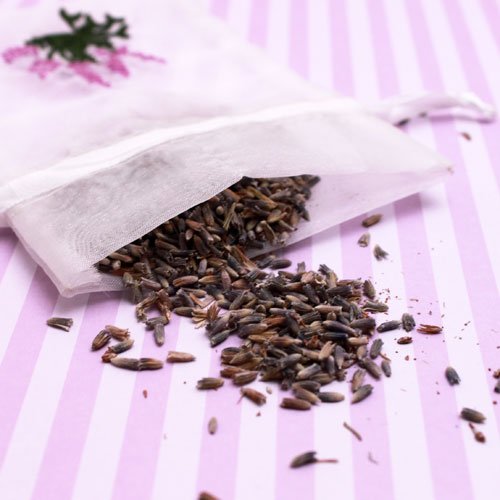
Propagation of lavender by cuttings
The fastest way to propagate your lavender is by using cuttings.
Depending on the variety, you can take cuttings from the soft or woody part of the plant.
Soft cuttings are usually taken in the spring when they are plentiful and taking them will not damage the parent plant.
While soft cuttings can only be taken in spring, woody cuttings can be taken both in spring and autumn.
Regardless of the type of cutting, you should always choose healthy stems for scarification. Choose stems with nice color and no flowers. Use a sharp knife to cut off a cutting 8-10 cm long. Woody cuttings should be cut below the bulge where the leaves begin.
Remove the leaflets from the lower part of the cutting (eg the bottom 5 cm), and cut the very end of the cutting with a sharp knife.
After that, you can prepare the pot in which you will plant your lavender cutting.
Pour soil and humus into the pot and plant the cutting at a depth of 5 cm. Before planting, you can also use a scarification hormone solution to achieve better results.
After that, water the plant regularly, but not too much and keep it in a warm place.
Soft cuttings should germinate after 2 to 4 weeks, and woody cuttings will take a little longer.
If after that period you try to shake the plant a little and you feel that it gives resistance, it means that the plant has formed roots and is ready for transplanting.
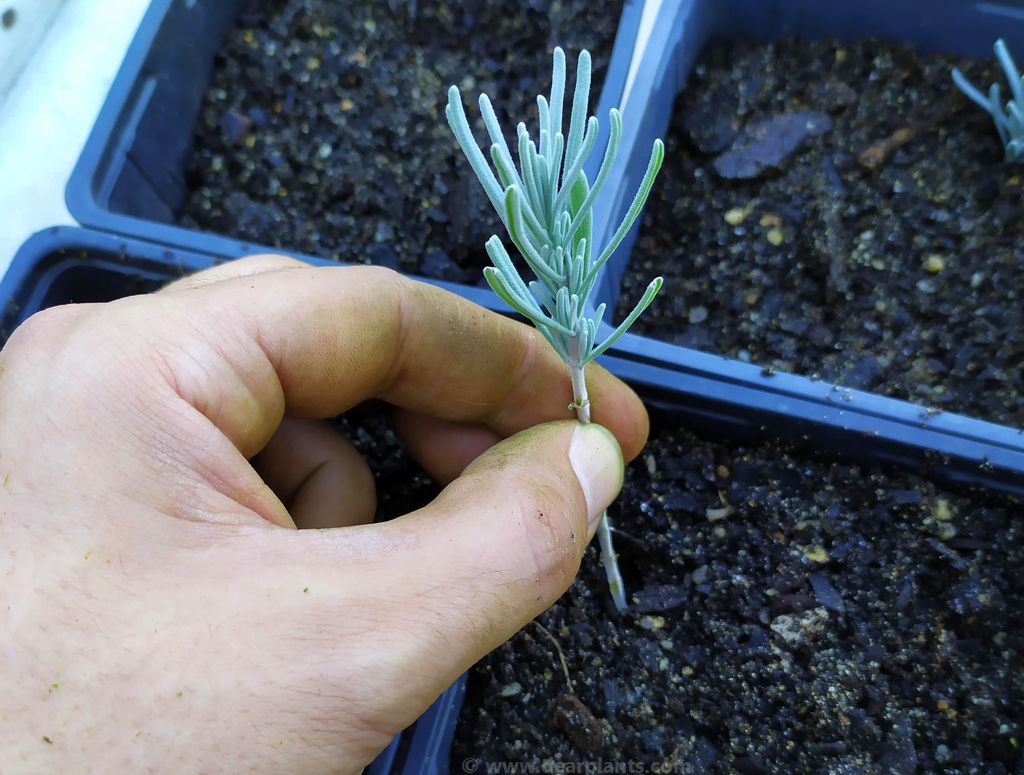
Lavender in the yard: How to grow lavender at home
Lavender is not only a beautiful addition to any yard, but also a plant that offers fragrant flowers and many useful properties. If you are a beginner in growing lavender, it is important that you know how to properly choose the variety, plant it, care for it and maintain it. Here are some tips that will help you grow lavender successfully in your yard.
Choosing a lavender variety
For backyard conditions, Lavandula angustifolia, also known as true or English lavender, is most often recommended. This variety is more resistant to cold and is suitable for continental climates. However, if you live in warmer climates, consider Lavandula stoechas (French lavender), which is known for its distinctive flowers and drought tolerance.
Planting lavender in the yard
Lavender loves the sun, so it is important to plant it in a place where it will have direct sunlight for at least six hours a day. The soil should be well drained, as lavender does not tolerate excessive moisture. If the soil in your yard is heavy or clayey, consider adding sand or gravel to improve drainage. The ideal time to plant lavender is spring, after all risks of frost have passed.
Watering and maintenance
Although lavender is a plant that tolerates drought well, it is important to water it properly, especially in the first year after planting until it takes root. Water it regularly, but make sure the soil is not too wet. After the plant is well rooted, you can water the lavender less often, about once a week. In dry periods or during the summer, she may need a little more water.
Pruning is also an important part of lavender care. Prune the plant regularly after flowering, removing about a third of the length to encourage dense growth and abundant blooms the following season. Avoid cutting into the woody part of the tree, as lavender is difficult to regenerate from this part.
Harvesting lavender from the yard
You can pick lavender when the first flowers open, usually during the summer. The best time to harvest is in the morning, after the dew has dried, but before the sun is too strong, because then the flowers contain the most essential oils. Carefully cut the flowers and dry them in a well-ventilated place, away from direct sunlight, in order to retain their color and fragrance.
Maintenance of lavender in the winter months
If you live in an area with cold winters, lavender should be protected from frost. Place a layer of mulch or straw around the plant to protect the roots. If you have lavender in pots, bring it inside or in a protected area during the winter.
Growing lavender in the yard is not difficult, and with minimal care, it will reward you with beautiful flowers, fragrance and many useful properties. By choosing the right variety and following the basic tips for its cultivation, lavender can become a favorite plant in your garden.
Essential oil of lavender
Ethereal or lavender essential oil it is obtained in a distillation process, where pure essential oil is extracted from lavender flowers with steam, with a by-product called hydrolat or floral water„.
So far, a large number of tests have been done on the plant Lavandula angustifolia, precisely because of its prevalence and variety of its application.
Based on these tests, it was determined that oxidized monoterpenes represent the dominant group of essential oil Lavandula Angustifolia (87,36%), with linalool (35,01%) and linalyl acetate (38,23%) as the main components.
The dominant compounds of the class of hydrocarbon monoterpenes (5.49%) of lavender oil are: α-pinene, limonene, β-trans-ocimene and camphene, while β-caryophyllene is the main sesquiterpene of this oil.
It has been shown that the quantitative composition of lavender essential oil depends on the genotype of the plant and the place of cultivation, while the qualitative composition changes significantly with changes in altitude and microclimatic factors.
For this reason lavender oil has found its application in various areas of our life. We can find it in medicine, cosmetics, decoration, and even in cooking.
Benefits of lavender oil effects on our immune and nervous systems have been known for a long time, which explains its increasing popularity in the field of medicine.
Lavender hydrosol
Lavender hydrolat, popularly known as "floral water" is produced by steam distillation of lavender flowers during the production of lavender essential oil. Lavender Hydrosol is not just plain water, it is the essence of a plant that contains numerous beneficial ingredients for your skin and your home. While lavender oil has a more concentrated aroma and a stronger effect, the hydrosol is mild, but no less effective. This liquid is rich in phytonutrients, flavonoids and antioxidants, making it extremely useful in cosmetics and home care. Forget about complicated cosmetic treatments – this simple liquid can become your best ally.
Infused lavender oil (macerate)
The infused oil or macerate is obtained by the process of steeping dried lavender flowers in a mixture of unrefined base oils. These can be olive oil, grape seed oil and the like. This process usually takes about 30 days, where this mixture is kept in light and heat, with regular stirring.
Through this process, the base oil extracts the essential oil from the flower of the infused plant and takes on its scent and properties.
In this way, we add the properties of infused herbs to base oils that are normally healing for our skin. This type of oil is safe for aromatherapy, nutrition and for direct application to the skin, because there is no fear of allergic reactions, as is sometimes the case with pure essential oil, whose concentration is extremely strong.
The infused oil has a milder smell than the pure one essential oils, but on the other hand, it has different properties and applications.
Purely infused lavender oil it is suitable for aromatherapy, massage, skin and hair care and hydration.
It is suitable for treating eczema, acne or dry scalp and damaged hair ends.
Lavender tea
Lavender tea is known for its soothing properties and benefits for the body and mind. This gentle herb provides more than a pleasant aroma – its tea has a number of health benefits.
Benefits of lavender tea:
- Relaxation and calmness: Lavender tea is the perfect choice for those struggling with stress, anxiety or insomnia. Regular consumption helps to achieve inner peace and improve sleep.
- Improving digestion: Lavender is known to ease indigestion, reduce bloating and help with stomach cramps.
- Natural anti-inflammatory effect: Thanks to its antioxidants and anti-inflammatory properties, lavender tea can help reduce inflammation in the body.
How to use lavender tea?
Preparing lavender tea is simple:
- Pour one teaspoon of dried lavender flowers into a cup.
- Pour 200 ml of boiling water over them.
- Let the tea steep for 5-10 minutes.
- Strain and enjoy a mild, fragrant drink.
Lavender tea you can drink in the evening to relax before bed, or whenever you need a moment of peace during the day.
Visit our webshop
Natural cosmetics and natural scented candles according to the original recipe and in harmony with nature.
ShopConclusion
Although we can talk about lavender for hours and days, we decided to put the most important things related to this beautiful plant in one place.
This text can serve as a kind of "guide for beginners" if you want to give your yard, garden or terrace a beautiful resident.
We tried to convey to you what lavender can offer and why we love and appreciate it so much and why we decided to make it the main ingredient in our various products. natural cosmetics.
Its benefits are immeasurable, and its smell is unique. This is what made us dedicate ourselves to her to such an extent, and we know that she will repay us many times over.
Thank you lavender!
With smile,
Balavander





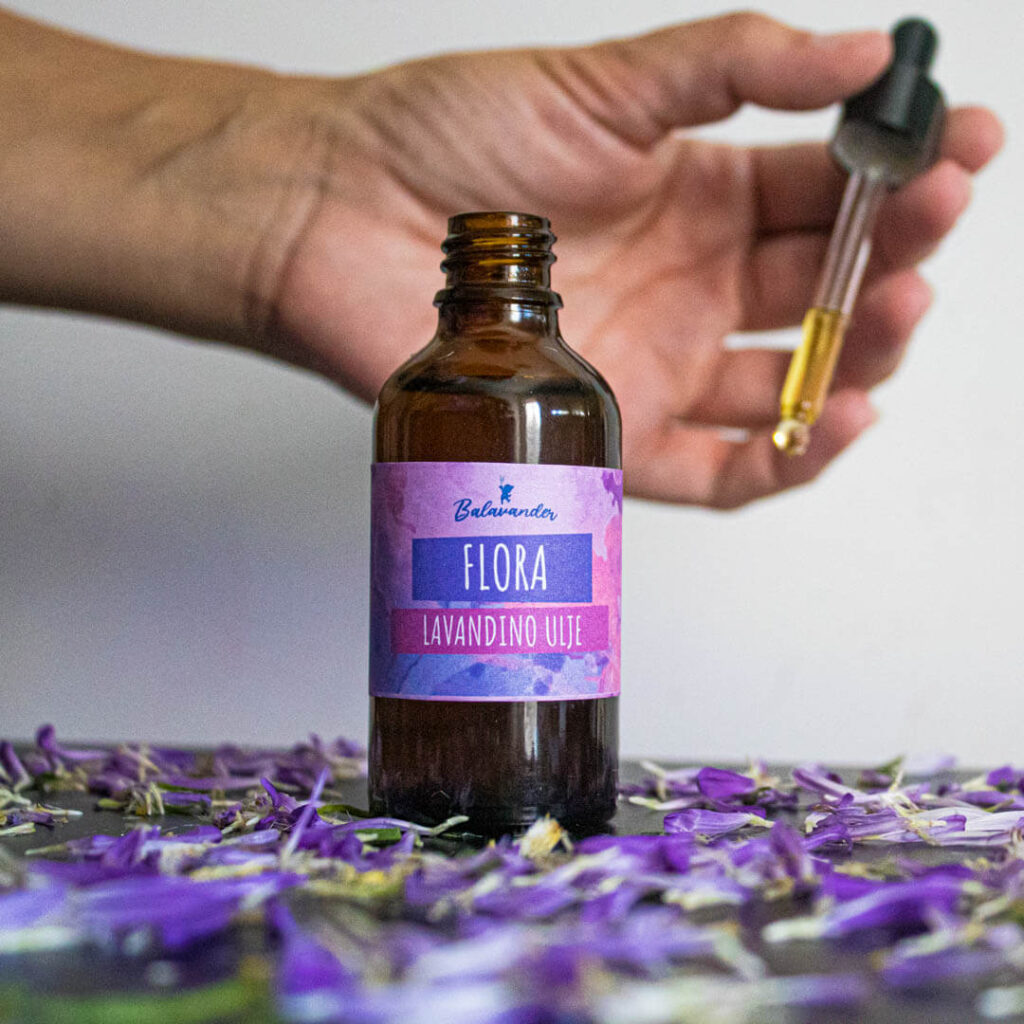

7 replies on “Lavanda. Detaljan vodič za početnike.”